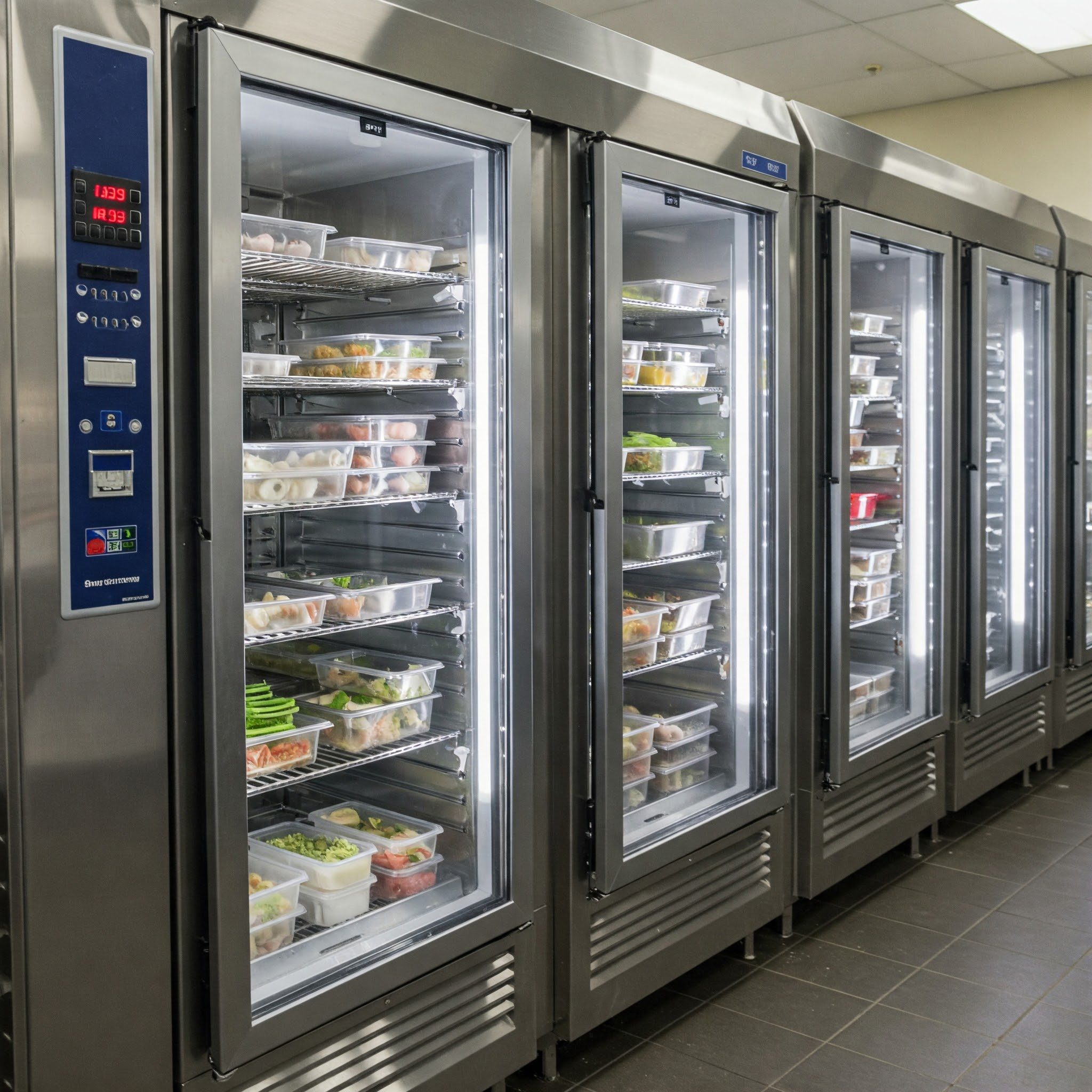Catering & Storage Freezers: Essential Cold Storage Solutions
Catering and storage freezers are critical for maintaining the quality and safety of frozen foods in commercial kitchens, catering businesses, and food storage facilities. Designed for durability and efficiency, these freezers provide ample space and consistent freezing conditions to store ingredients, prepared meals, and other perishables.
What Are Catering & Storage Freezers?
Catering and storage freezers are heavy-duty freezing units tailored for commercial use. They are engineered to store large quantities of food at optimal freezing temperatures, ensuring prolonged shelf life and preventing spoilage. These freezers come in various types and configurations to suit different operational needs, from small catering events to large-scale foodservice operations.
Types of Catering & Storage Freezers
1. Upright Freezers
- Description: Tall, vertical units with shelving for organized storage.
- Best For: Kitchens with limited floor space.
- Features:
- Multiple adjustable shelves.
- Easy-to-access design.
- Lockable doors for security.
2. Chest Freezers
- Description: Horizontal units with a larger storage capacity.
- Best For: Bulk storage of ingredients or large items.
- Features:
- Deep compartments for maximum storage.
- Hinged lids for easy access.
- Energy-efficient designs.
3. Under-Counter Freezers
- Description: Compact units that fit beneath countertops.
- Best For: Small catering setups and space-saving needs.
- Features:
- Compact design with sufficient storage.
- Easy integration into existing kitchen layouts.
- Ideal for quick access during service.
4. Walk-In Freezers
- Description: Large, room-like units for high-capacity storage.
- Best For: Large-scale catering businesses and central kitchens.
- Features:
- Customizable sizes and shelving.
- Advanced insulation for consistent freezing.
- Heavy-duty doors and flooring.
5. Portable Freezers
- Description: Mobile units for on-the-go catering needs.
- Best For: Outdoor events and temporary setups.
- Features:
- Lightweight and compact designs.
- Easy transportation and setup.
- Reliable freezing performance in varying environments.
Key Features of Catering & Storage Freezers
- Temperature Control
- Adjustable settings for consistent freezing at -18°C or lower.
- Durable Construction
- Built with stainless steel or heavy-duty materials for long-term use.
- Energy Efficiency
- Modern units with eco-friendly refrigerants and low power consumption.
- Storage Flexibility
- Adjustable shelves and compartments for organized storage.
- Easy Access
- Features like sliding doors, hinged lids, or wide openings for convenience.
- Defrost Systems
- Options for manual or automatic defrost to prevent ice buildup.
- Lockable Doors
- Secure storage to protect inventory.
- Digital Displays
- Temperature monitoring and controls for precise management.
Applications of Catering & Storage Freezers
- Catering Services: Storing ingredients and prepared dishes for events.
- Restaurants and Cafes: Preserving frozen foods for daily operations.
- Supermarkets: Storing frozen goods for retail sale.
- Hotels: Maintaining frozen inventory for room service and banquets.
- Food Production Facilities: Bulk storage of raw materials or finished products.
Benefits of Catering & Storage Freezers
- Prolonged Shelf Life
- Keeps food items fresh and safe for extended periods.
- Operational Efficiency
- Ensures a steady supply of frozen goods during busy hours.
- Space Optimization
- Designed to maximize storage capacity in various kitchen layouts.
- Energy Savings
- Advanced insulation and energy-efficient models reduce operational costs.
- Improved Organization
- Shelving systems and compartments make inventory management easier.
- Customizable Solutions
- Wide range of sizes and configurations to meet specific needs.
- Durability
- Robust construction ensures longevity in high-usage environments.
Maintenance Tips for Catering & Storage Freezers
Daily Maintenance
- Clean the Exterior: Wipe down surfaces to maintain cleanliness and hygiene.
- Check Door Seals: Ensure the seals are intact for efficient freezing.
Weekly Maintenance
- Defrost Regularly: Manually or automatically defrost to prevent ice buildup.
- Inspect Temperature Settings: Verify the unit is maintaining the desired temperature.
Monthly Maintenance
- Clean the Interior: Remove items and sanitize shelves, walls, and compartments.
- Inspect Air Vents: Ensure vents are clear of dust and debris.
Annual Maintenance
- Service the Refrigeration System: Hire a technician to check compressors, fans, and refrigerant levels.
- Replace Worn Parts: Replace door seals or faulty components to maintain performance.
Troubleshooting Common Issues
- Temperature Fluctuations
- Cause: Overloading, poor door seals, or faulty thermostat.
- Solution: Reduce load, replace seals, or calibrate the thermostat.
- Excessive Ice Build-Up
- Cause: Frequent door openings or defrost system failure.
- Solution: Minimize door usage and check the defrost system.
- Unusual Noises
- Cause: Loose parts or compressor issues.
- Solution: Tighten components or consult a technician.
- High Energy Consumption
- Cause: Dirty condenser coils or inefficient insulation.
- Solution: Clean the coils and inspect insulation.
- Water Leaks
- Cause: Blocked drain pipes or melting ice.
- Solution: Unblock the drain and defrost as needed.
Choosing the Right Catering & Storage Freezer
- Storage Capacity
- Choose a size that fits your inventory and available space.
- Type of Freezer
- Select upright, chest, or walk-in freezers based on your business needs.
- Energy Efficiency
- Look for models with energy-saving features to reduce costs.
- Defrost System
- Decide between manual or automatic defrost based on convenience.
- Temperature Range
- Ensure the freezer can maintain consistent freezing temperatures.
- Durability
- Opt for heavy-duty materials to withstand daily use.
- Additional Features
- Consider extras like lockable doors, digital displays, or portable designs.


